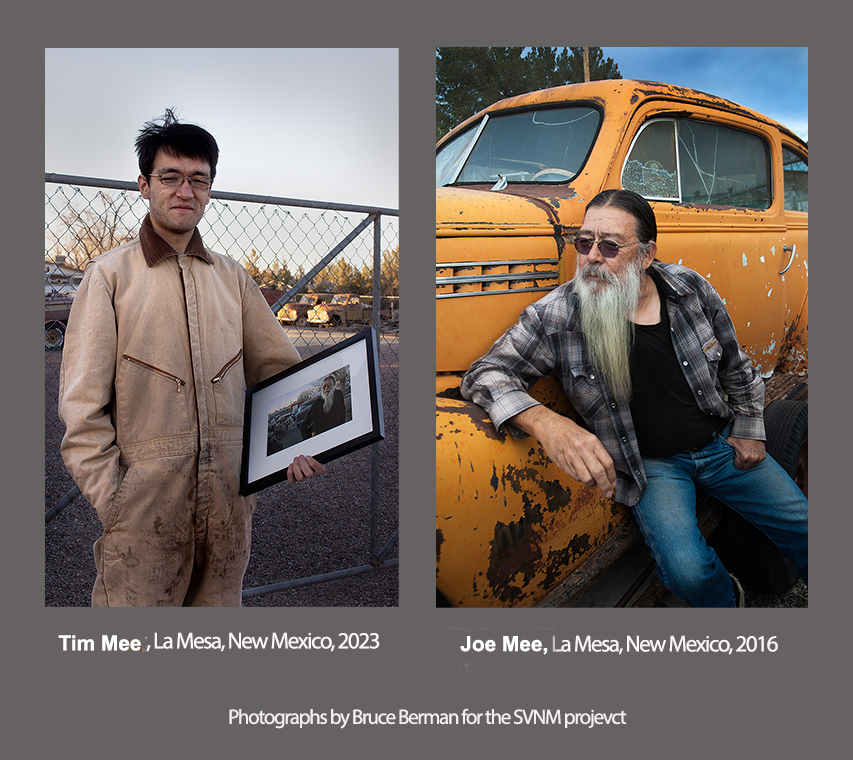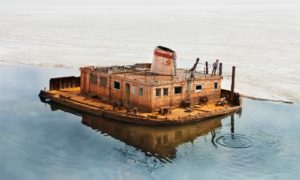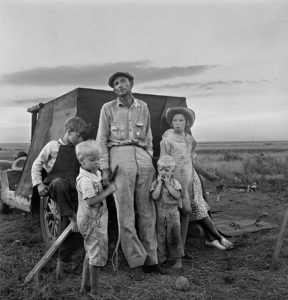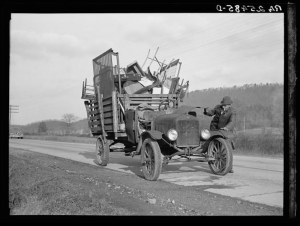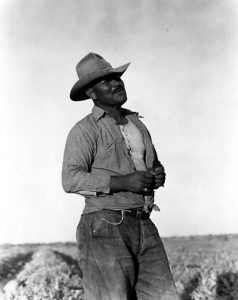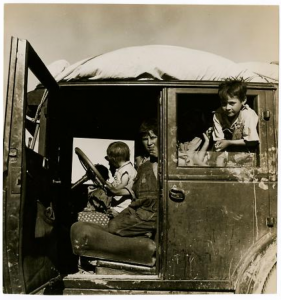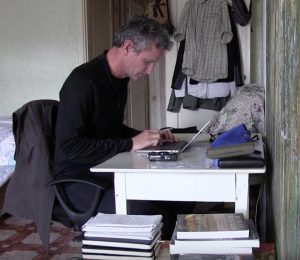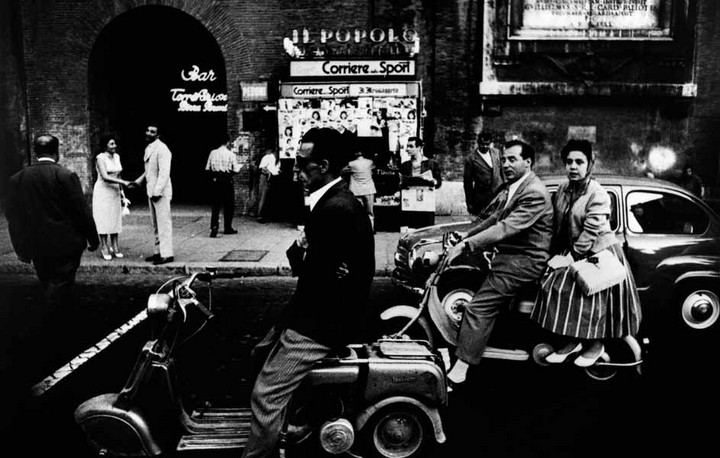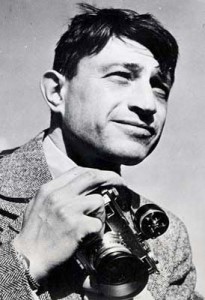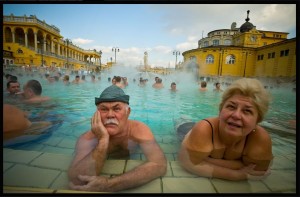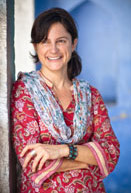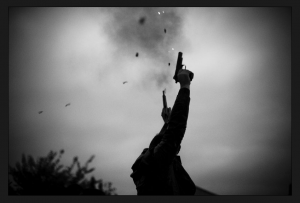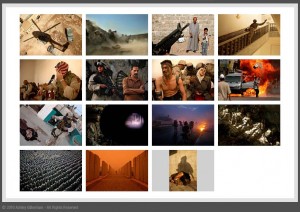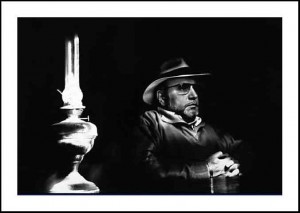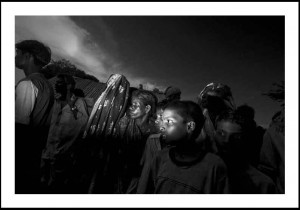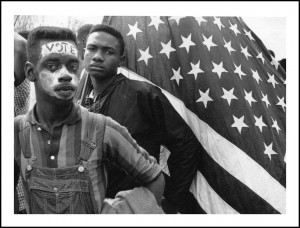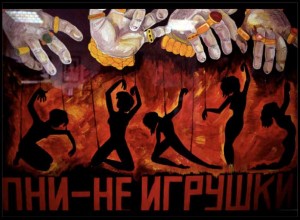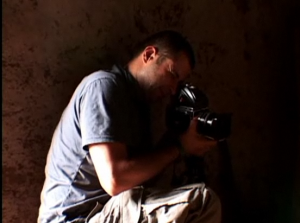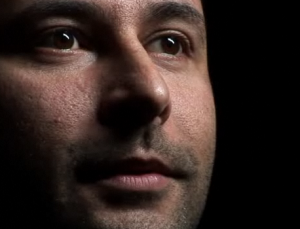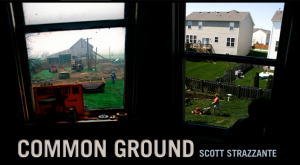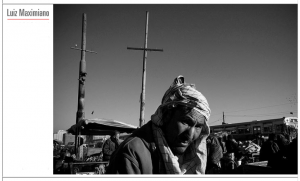Right there, right in La Mesa, New Mexico, four days ago, is the lesson on why we do DOCUMENTARY PHOTOGRAPHY!
My documentary photography class at New Mexico State University (NMSU) has been doing a project for the past twelve years, the Small Village New Mexico project (SVNM), documenting the small villages in southern New Mexico.
One of the students’ favorites towns is La Mesa. Probably because there has been one guy, Joe Mees, who rebuilds cars and Harleys, and has always been very welcoming to the students. It doesn’t hurt that he looks very cool!
Last Thursday, we met Tim Mees, Joe’s son.. He told us of that “Joe has been bed-ridden for about a year.”
EVGENIA ARBUGAEVA: THE LANDSCAPE OF SIBERIA
Untitled (2012) from the series Tiksli
by Evgenia Arbugaeva
For more work see: http://bit.ly/2y8bQha
ROTHSTEIN: THE TRUTH ABOUT SKULLS
Text by Bruce Berman
Arthur Rothstein was hand picked by Director Roy Stryker to be one of the original photographers for the Historical Section of the Resettlement Administration (later the Farm Security Administration/FSA). The unit was birthed to be an explainer for agriculture projects that benefited the agrarian sectors of Depression-ravish America. Rothstein’s “eye” was excellent, his technical skills first rate and he always came back with the goods and then some.
Why doesn’t he get the attention of Dorothea Lange or Walker Evans, or, even, Russell Lee?
Was it the cow skull “controversy?”
Perhaps.
For me this “controversy has always seemed,well… overblown. He moved the skull several times and then, finally, settled on the one we all know.
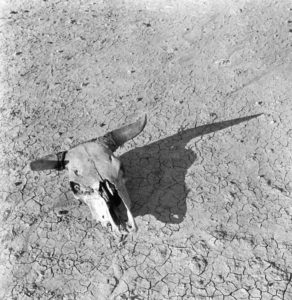
Was he (visually) lying?
I think not.
MIGRANT FATHER
Migrant Father, June 1938, by Dorothea Lange
Dorothea Lange’s extended caption:
Old time professional migratory laborer camping on the outskirts of Perryton; Texas at opening of wheat harvest. With his wife and growing family; he has been on the road since marriage; thirteen years ago. Migrations include ranch land in Texas; cotton and wheat in Texas; cotton and timber in New Mexico; peas and potatoes in Idaho; wheat in Colorado; hops and apples in Yakima Valley; Washington; cotton in Arizona. He wants to buy a little place in Idaho
CROPDUSTER
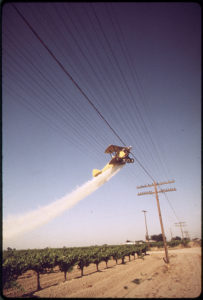
The DOCUMERICA project was created in 1972 and its Director, Gifford Hampshire, tried to recreate the all-encompassing visual story of America that Roy Stryker began in 1936 with the Farm Security Administration project that told the story of the Depression and, more generally, the story of America as it struggled through the Depression and then toward the end in 1939, told the story of a strong America, preparing for war.
Charles O’Rear was one of the notable photographers for DOCUMERICA. For more about him, including the story of how he created Bliss (the iconic Microsoft screen image) view: https://youtu.be/_G5Z8aMctBw
PEOPLE ON THE MOVE: 1937
Tenant farmer moving his household goods to a new farm.
Hamilton County, Tennessee, Rothstein, Arthur, 1937 (LOC)
IMPERIAL VALLEY, 1935
MIGRATION 30s STYLE
Ten Children, March 1937, by Dorothea Lange,
for the RA (courtesy of OMCA)
PAUL SALOPEK THREE YEARS INTO FOREVER
Watch this six minute video from Paul Salopek giving an update on his Out Of Eden Walk, presented to the Pulitzer Center for the 100th birthday of the Pulitzer Prize.
VIEW HERE:
PRE ART LANDSCAPE
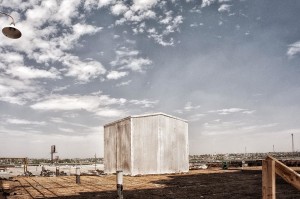
The Pre Art Landscape is one in which there are images only attractive to some’s intellect that titillates the intellect of others who are over educated, over intellectualized, clean from lack of experience with the world that they choose to not touch and where, through their lack of desire to know a world around them other than the one aforementioned, allows them to revere and praise that which is without interest to anyone but them and their ilk.
So here is an image from my Guggenheim Fellowship submission. I created this less than fifteen minutes ago by walking out the back door of my slum loft (yes there are still some around that the yuppies and Julias haven’t occupied and, therefore, chased out those who were living there, not for some feeble concept of what is cool, but because, previously, they could afford the rent if they were willing to put up with the inconveniences and degradations of everything that the word “slum” implies).
If I hadn’t written this piece I very well may have earned a Guggenheim.
I coulda been a contenda…instead of -let’s face it- a bum…which is a what I am…*
I couldn’t resist the rant.
I suspect that’s what has saved my heart’s soul from an early death.
*Thank you Budd Schullberg (http://bit.ly/1KetpPl)
BRIDGE TO SOMEWHERE
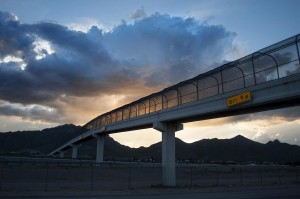
Text and Words by Bruce Berman
The meteorologists call this a “High Pressure system being pushed out by a Low Pressure system.”
Photographers will admit “every once in a while things come together and you get a lucky.”
What do I call it? What does one get for being out there, every evening and every day, always with your “axe (camera)at the ready, often coming home with nothing but the pleasure of having been out there trying?”
The funny thing is, as usual, I was in a part for town I’d never been in before (there are few left). It is a very unusual ‘hood for El Paso. In another city one would call it the “ghetto.” Here, no one thinks there is a ghetto. Being a predominantly latino city (82%), if you have a neighborhood that is lower income, the natural thing is to call it a barrio. This neighborhood was definitely “low income,” and of the three people I conversed with, two had been drinking alcohol to the point of inebriation. It is a mostly Black neighborhood, unusual in El Paso that is only 4% African-American.
Susan Meiselas on The Engaged Photographer
Editor’s note: Susan Meiselas, Magnum Photographer and long time great documentarian, discusses documentary photography, motivations, uses, intentions and hopes for the work’s impact on subjects and society.
This project, funded by the Open Society Foundations (Meiselas Co-Curated the project’s exhibition), shows the work of some of the world’s best contemporary photographers working in this discipline.
Wiliam Klein Still Rocks
The “Story Teller With Pictures”: Carl Mydans
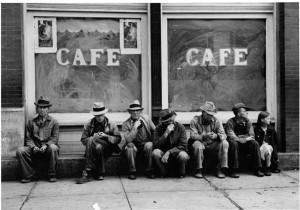
Article edited and written by Bruce Berman
Carl Mydans began his photographic career with the Farm Security Administration in 1935, and was quickly hired away by Life magazine in 1936. Mydans photographed national stories until 1939, when Life sent Carl and his wife Shelley Smith Mydans to cover the war in Europe as the first husband and wife photo-journalist team.
From Europe, the couple was re-assigned to the Pacific theater. In 1941 they were captured by Japanese forces in the Philippines and held as prisoners of war until 1943. Mydans returned to the war alone in 1944 to cover the Italian front, while his wife and partner remained behind in the United States.
Carl Mydans was born in Boston on May 20, 1907. The family moved to Medford, Massachusetts, on the Mystic River where Carl went to high school and worked in the local boatyards after school and on weekends. He later became interested in journalism and worked as a free-lance reporter for several local newspapers. In 1930 he graduated from the Boston University School of Journalism.
Mydans then moved to New York and, while working as a reporter for the “American Banker,” began to study photography at the Brooklyn Institute of Arts and Sciences. In July 1935 his skill with the new 35mm “miniature” camera landed him a job with the Department of the Interior’s Resettlement Administration, which soon merged into the Farm Security Administration (FSA). Mydans joined Walker Evans and Arthur Rothstein as the core of the remarkable team of photographers assembled by Roy Stryker to document rural America.
While travelling through the southern states photographing everything that had to do with cotton, Mydans developed the shooting style he would use throughout his career. He concentrated on people, and he photographed them in a respectful and straightforward manner. As he had been taught to do as a reporter, he kept careful notes on every shot.
When Mydans joined the staff of Life in 1936 he joined a group of photojournalists who were changing the way press photography was done. Photojournalists had traditionally used 4×5 Speed Graphic cameras with flashguns and reflector pans, and their pictures of people tended to look much the same: overlit foregrounds fell off to dark backdrops that had no detail. But Mydans and his colleagues at Life relied on 35mm cameras that allowed them to work with available light, capturing a new kind of excitement and activity in their photographs. Their success with the small camera revolutionized the practice of photojournalism.
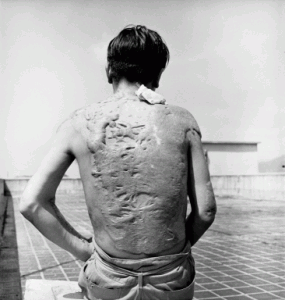
A Documentary Survey Project From China
Here is a nice vision for a documentary project that involves multiple photographers, blending old and new.
If you speak Chinese you can forgo the subtitles!
Altaf Qadri
Altaf Qadri, 35, is an award winning photographer.
Qadri, 35, won a World Press Photo award this year for his poignant photograph of relatives mourning over the body of a man killed in a shooting by Indian police in Indian-controlled Kashmir.
photography Altaf Qadri
Qadri, an Indian citizen, is a native of the Kashmiri city of Srinagar. He studied science at Kashmir University and worked as a computer engineer before taking a job as a staff photographer at a local Kashmiri newspaper in 2001.
CLICK ON THIS IMAGE FOR MORE Altaf Qadri: 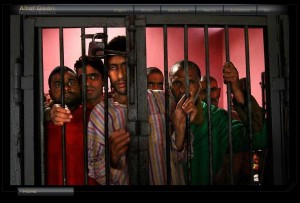
In 2003, he joined the European Press Photo Agency and covered the conflict in Kashmir. In 2008, he began working for The Associated Press in the Indian city of Amritsar. His work has appeared in magazines and newspapers around the world and has been exhibited in the United States, China, France and India.
André Cypriano Shoots The Other Venezuela
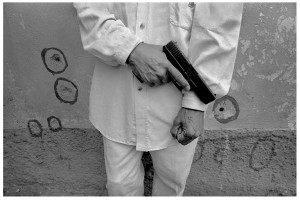 From Shantytown by André Cypriano-©2011
From Shantytown by André Cypriano-©2011
André Cypriano takes us into the forbidden hills of Caracas Venezuela. He takes us into a strange land of oddly shaped houses, winding streets carved out of the hills, into a land so odd and so foreign that it must be myth but can only be reality. He notices, as all greart documnentarey phtography does, that ordinary reality, in some cases, is always more intense and mind-boggling than any fiction can be,
Cypriano takes us to Rochinha.
How he got there, who gave him access and what he encounters is worth serious viewing time. In the New York times Lens Blog post, below, wander with André.
He will take you on a journey you well not forget.
For more from André Cypriano, see:
http://lens.blogs.nytimes.com/2011/12/06/in-brazil-finding-dignity-in-horror/
Ami Vitale; Beauty, Power, Life
Hungary Baths by Amy Vitale©2011
From Ami Vitale’s website (http://www.amivitale.com):
Ami Vitale’s journey as a photojournalist has taken her to more than 75 countries. She has witnessed civil unrest, poverty, destruction of life, and unspeakable violence. But she has also experienced surreal beauty and the enduring power of the human spirit, and she is committed to highlighting the surprising and subtle similarities between cultures. Her photographs have been
exhibited around the world in museums and galleries and published in international magazines including National Geographic, Adventure, Geo, Newsweek, Time, Smithsonian. Her work has garnered multiple awards from prestigious organizations including World Press Photos, the Lowell Thomas Award for Travel Journalism, Lucie awards, the Daniel Pearl Award for Outstanding Reporting, and the Magazine Photographer of the Year award, among many others.
Now based in Montana, Vitale is a contract photographer with National Geographic magazine and frequently gives workshops throughout the Americas, Europe and Asia. She is also making a documentary film on migration in Bangladesh and writing a book about the stories behind the images.
Henri Still Kicks!
Article posted courtesy of Huffington Post and Steve Ettlinger
Is Photojournalism Dead Yet?
by Steve Ettlinger
Born in the 1930?s, come of age in the 1950?s and 60?s, and pronounced near dead in the 1970?s and virtually buried by the closing of magazines/rise of the internet–you have to wonder how it is that some aspects of this wonderful world are still around.
Andrea Bruce Shoots You In The Heart
Ingushetia by Andrea Bruce
Andrea Bruce is a passionate, stylish, skilled documentary photography who’s images -in the best traditions of still photography- sear your soul and drive their point through your heart, restoring it instead of terminating it. She is the new breed of documentary photographer that blends all the skills of good journalism with all the skills of great graphic image-making and produces a coctail that is nothing less than photo alchemy.
Take a look: http://www.andreabruce.com
Ashley Gilbertson: Shrines and Conflicts
Contact Sheet of Ashley Gilbertson’s Conflict Photography
“He has a very good news sense and for me that’s really essential,”
says Cecilia Bohan, foreign picture editor for The New York Times.
“I need them [her photographers] to be my eyes and ears on the ground.”
Ashley Gilbertson is a VII photographer and one of the strongest Conflict Photographers working today. His recent work, done far from the battlefield but in the bedrooms of fallen soldiers, is one of the strongest testaments to the outright sadness about Loss that War induces, that this editor has ever seen.
For a sample of Mr. Gilbertson’s work:
- For a personal website:SEE: http://www.ashleygilbertson.com/index.php
- A piece from 2004 in Photo District News, SEE: http://www.ashleygilbertson.com/index.php
- For The Shrine Down The Hall, SEE: http://www.nytimes.com/interactive/2010/03/21/magazine/20100321-soliders-bedrooms-slideshow.html?hp
End of Labor Town: Dumping Ground of Old Men in Japan
These are not the view of Japan that we normally see. Shiho Fukada shows us how some elderly people in Japan fare. It is not a story unique to Japan.
SEE http://www.socialdocumentary.net/exhibit/shiho_fukada/728
Pearl Harbor Brownie
[pro-player width=’600′ height=’500′ type=’video’]https://documentaryshooters.com/wp-content/uploads/2009/09/PearlOnFilm3.mov[/pro-player]
Evgen Bavcar: The Blind Photographer
Self portrait by Evegen Bavcar
Photography has always been thought about as “another,” way of seeing.
And it is.
But, usually, we think about that as a person looking through the camera, seeing what’s there, and, through the magic of the camera and the film -or digital- capture process, one sees the world in different way.
More advanced photographers and appreciators of photography then allow for the transformative recognition of the quality and angle of light, of the Decisive Moment, of the power of distance to subject or, even, luck or magic.
It is this latter idea that infuses the work of Evgen Bavcar ((“E-oo-gen Ba-oo-char”), the Slovenian photographer is completely blind, completely eccentric and his images are totally wonderful.
Dhiraj Singh: Video Biographer
[pro-player]https://documentaryshooters.com/wp-content/uploads/2009/08/my-name-is-dechen.flv[/pro-player]
“My name is Dechen.”
Watch this touching video done by Dhiraj Singh.
He did an interesting thing: A Video Biograph.
In a way, all Visual Journalists who do stories on people, are doing “biography,” but with the addition of audio, where the subject can speak for themselves (edited, of course), where the image-maker can animate the images and drive the viewer’s emotions, the subject of the story becomes more “alive,” the depth is ratcheted up, and, potentially, the medium is beginning to resolve the age old struggle of photojournalism: Who’s viewpoint is this about? The subject’s or the photographer’s?
Dhiraj Singh: The (New) Eyes Of India
From “Six Feet Under,” ©2009Dhiraj Singh
For more work by Dhiraj Singh, SEE: http://www.dhirajsingh.com/01.htm
Dhiraj Singh is a Photojournalist who lives in Mumbai, India. His work has been published in numerous international magazines and online journals, including Newsweek, Vanity Fair, msnbc.com, The Wall Street Journal, L’Expresso, and, many others. He has won numerous awards (see his “bio,” on his site, above) and participated in many exhibitions. His pictures of the Mumbai terror attacks in 2008 were part of the prestigious group exhibition titled, ‘Bearing Witness’ held in Mumbai in 2009.
Documentaryshooters is honored to have permission to publish Mr. Singh’s work. We feel he has the insights and skills to show India as it is, depicting its greatness and its struggles, its deep and ancient soul as well as its modern and energetic heart. He, as no other photographer has, since, the great Raghu Rai’s seminal work of the 1970’s, ’80’s and 90’s, not only shows India and the sub continent, he makes us feel it.
Vote
“Vote,” Selma Voting Rights March, 1965
©Bruce Davidson
Sometimes we forget that the “Big Work,” the work that one becomes known for making isn’t all there is.
Bruce Davidson went south, from Chicago, on instinct.
The world was shaking and he felt the vibe.
The time was now: Civil Rights.
Real change.
Without assignment or specific destination he “nailed it,” and was able to work on the edges of the news, tell the story from a personal and deeply intimate viewpoint.
This image, for me, is one his best. Beautiful composition. Beatiful moment. Beautiful storyline. Iconic and packed with all the elements that make it a novel unto itself, if this was the only photography that existed from the era it was shot in, it would, I think, be enough to tell the story of the struggle.
One word and one image: sometimes it’s enough: Vote.
For More on Bruce Davidson: http://en.wikipedia.org/wiki/Bruce_Davidson_(photographer)
Prostitution: Pain
©2009 Photograph by Mimi Chakarova
GO TO: http://www.mclight.com/slideshow.html
Editor’s Note
This is one of the most painful documentaries I have ever seen.
Even more amazing is the fact that the work is not the slam and splash type of photojournalism that deals in blood, guts and flames.
Interview With Jonathan Torgovnik
SEE: http://mediastorm.org/0024.htm
Here is a quintessential insight into the drive to do documentary photography, a chilling portrayal of the challenges of working within difficult environments and of turning horror into hope. Listen to Jonathan Torgovnik talk about rape, murder and redemption in Rawanda.
Sam Faulkner
Displacement In The “Heartland”
SEE: http://mediastorm.org/0023.htm
A documentary project on Displacement…in the “Heartland!
This photographer shows how “progress,” comes to everywhere and the displacement is not limited to indigenous people either. In the end it is the interests of Capital weighed against the interests of Labor that is the issue of land appropriation and displacement.
Let this documentary speak for itself.
Braziliano Documentary Photographer
Sabastio Salgado Speaks
The great Brazilian photographer Sabastio Salgado talks about his work and his career:

